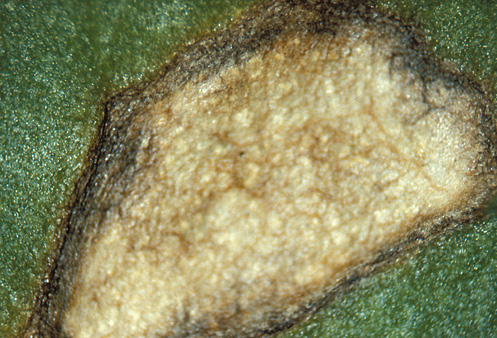Comparison of Cercospora and Bacterial Leaf Spots on Sugarbeet
(PP1244, Reviewed Sept. 2023)Cercospora commonly occurs, can result in considerable loss in yield and quality and reduces storability of sugar beet roots in piles. Bacterial Leaf Spots commonly occurs but usually not of economic importance; some rhizomania-resistant varieties have shown increased susceptibility to bacterial leaf spot.










